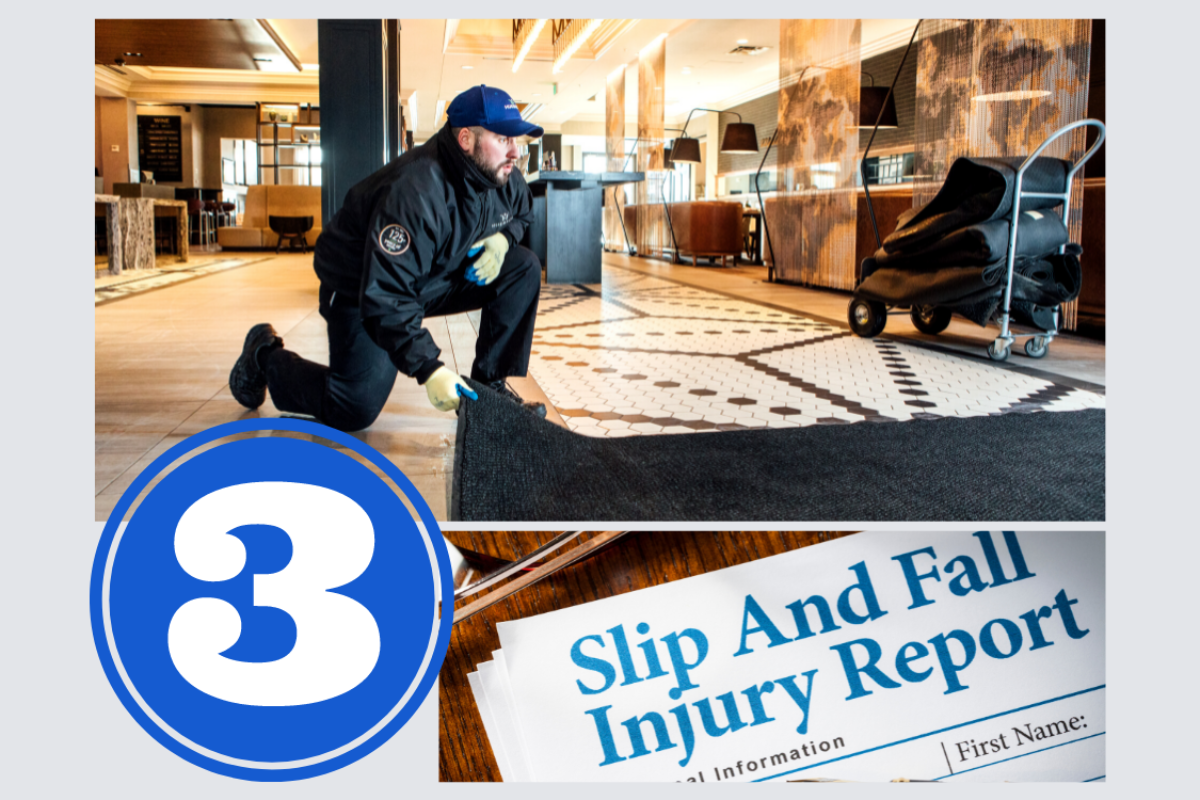No one wants to have a slip and fall incident in their workplace. According to the Consumer Product Safety Commission (CPSC), floors and flooring materials contribute directly to more than 2 million fall injuries each year. In addition, slips and falls are the leading cause of workers’ compensation claims and represent the primary cause of lost days from work. There are three key steps to reducing the likelihood of a slip and fall incident in your workplace.
Thoroughly Evaluate Walking and Working Surfaces
This can range from a smaller office with a staff of ten to a major facility expecting tens of thousands in foot traffic daily. With both, the goal is the same – identify areas of concern or hazard. In a smaller setting, simply walk your facility and determine the common walking areas and the flooring conditions in those areas. This starts in the parking lot. Are there unlevel surfaces, transitions from carpeted to slick surfaces, areas tracking in debris or areas with moisture build up on the floor? In a larger facility, the same goals are accomplished but with a walkway audit. This process utilizes a professional to perform a walkthrough of your facility (potentially involving floor DCOF testing) and provide an audit report of the entire facility.
Properly maintain your floor care program
The first steps in floor care begin in the parking lot, usually with debris and moisture tracked directly into your facility. Utilizing a floor matting service will capture and contain up to 90% of external debris. This allows for easier maintenance of interior walking surfaces. Regular dry and wet mopping is necessary in smaller situations while in larger facilities a mechanical extractor would be required. The more debris that can be captured upon entry or through transitional spaces, the greater the labor reduction of maintaining walking surfaces throughout a facility.
Continually observe and follow up
There will always be outside factors that cannot be predicted such as weather or fluctuations in foot traffic. Regularly monitor the programs in place to make sure they are adequate for the needs of a facility as time goes on. One of the simplest ways is to look around the entry matting. If you notice moisture or debris, you might need a different floor matting solution. If wet mops leave water cloudy or dry mops only ‘push’ and no longer ‘capture’ debris, they need to be replaced more often.
Huebsch Services provides commercial floor matting service programs to fit every business size. Our NFSI Certified Walkway Auditors are experts in floor mat safety. Consult with us about your facility needs. We’re here to help.


